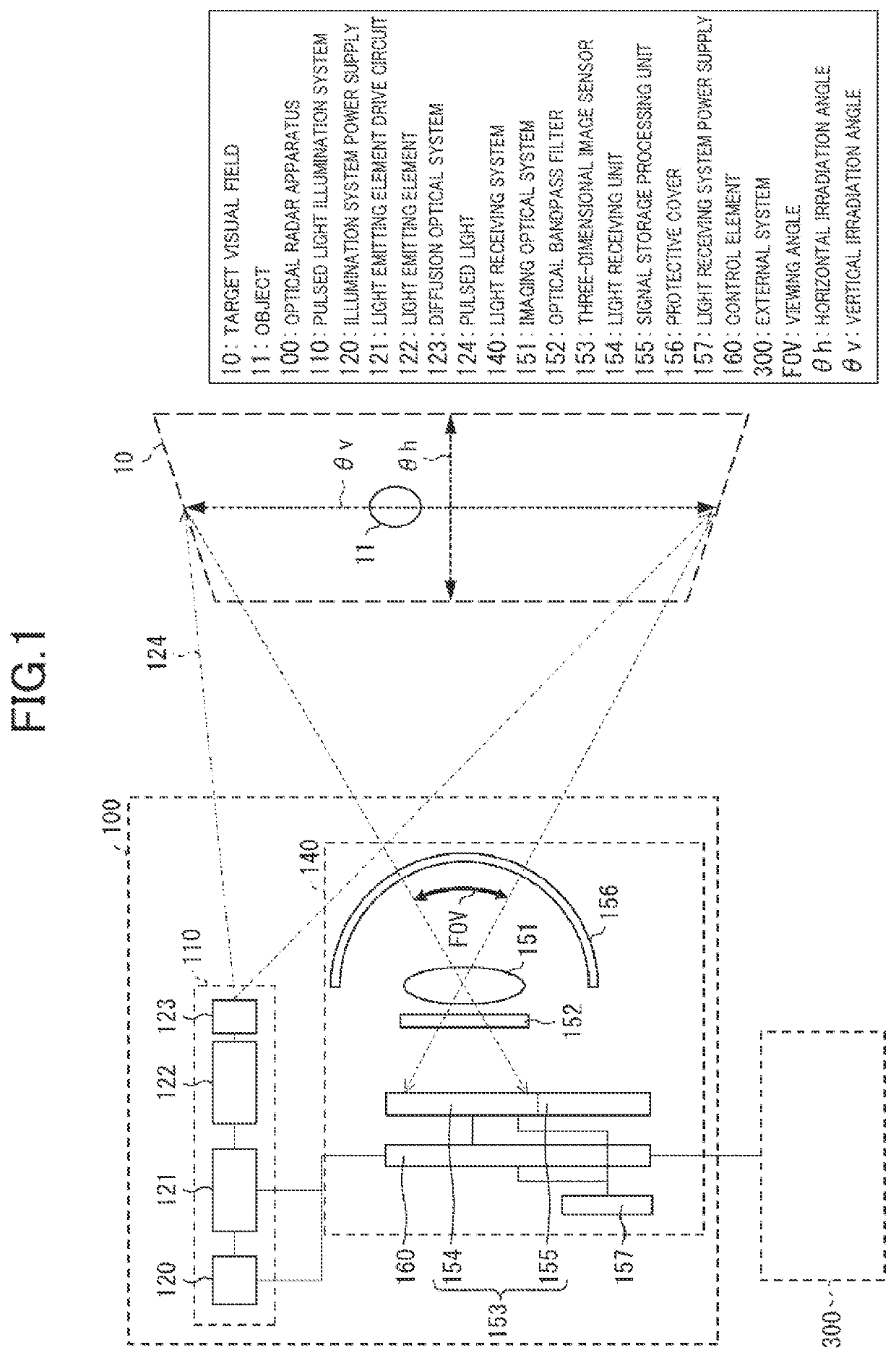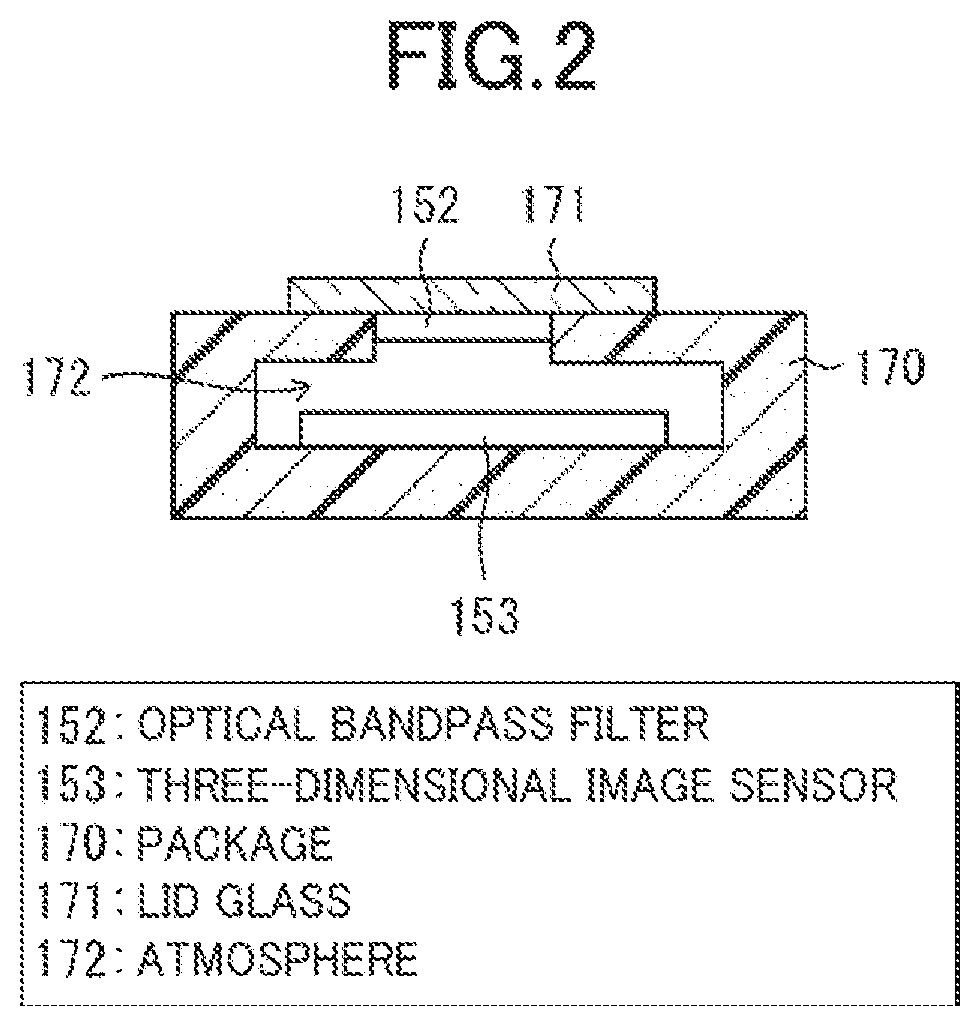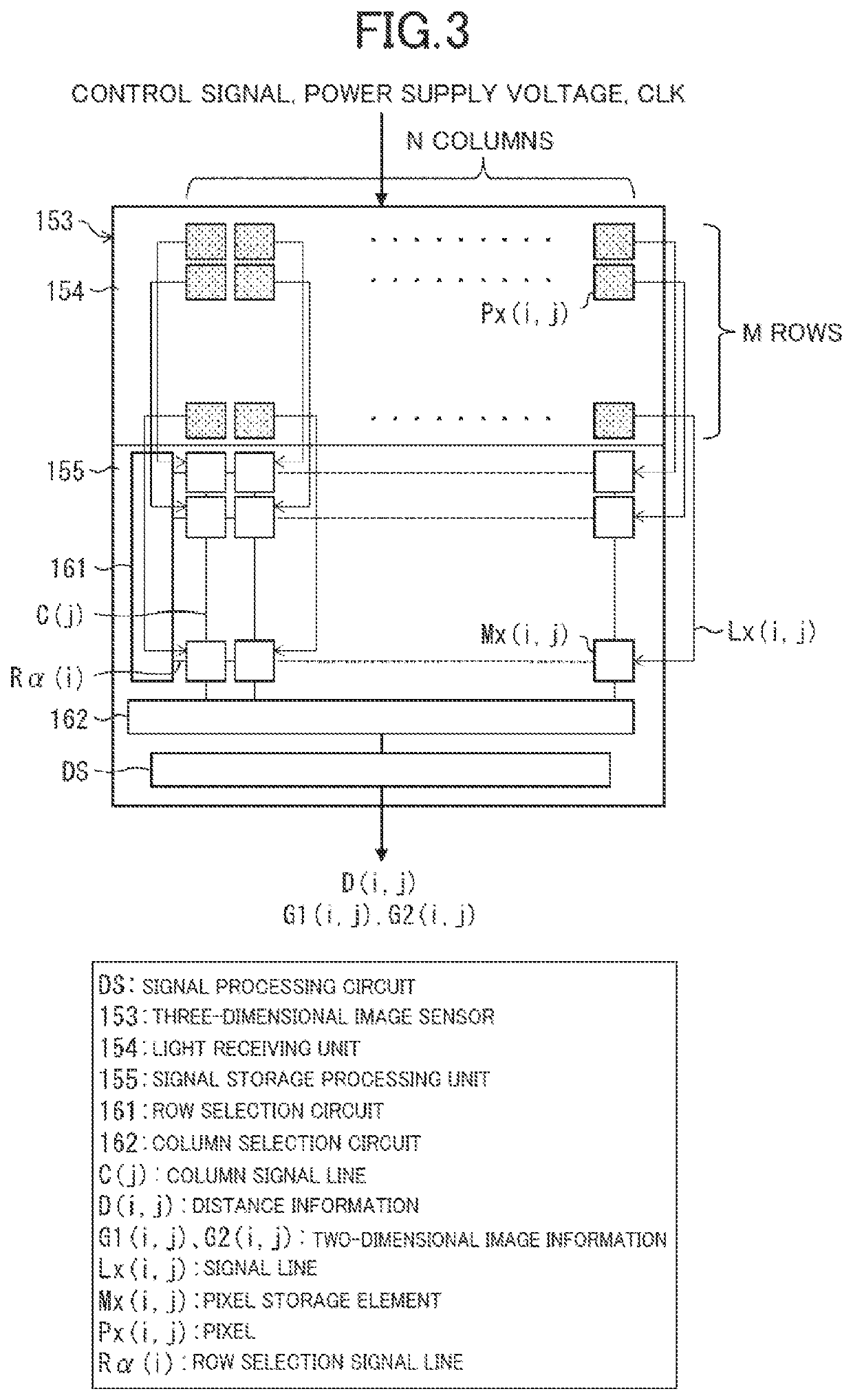Three-dimensional image sensor, optical radar apparatus, and processing apparatus
a technology of optical radar and image sensor, applied in the field of three-dimensional image sensor, can solve the problems of weak comparison of laser light intensity on an object, increase in cost and an increase in the size of the apparatus, and reduce the accuracy of distance measurement, so as to achieve the effect of wide measurement rang
- Summary
- Abstract
- Description
- Claims
- Application Information
AI Technical Summary
Benefits of technology
Problems solved by technology
Method used
Image
Examples
embodiment 1
[0029]Embodiment 1 of the present invention is described below with reference to FIGS. 1 to 9.
[0030]FIG. 1 is a schematic diagram showing a configuration of an optical radar apparatus 100 according to the present embodiment
100>
[0031]As shown in FIG. 1, the optical radar apparatus 100 includes a pulsed light illumination system 110 configured to irradiate a target visual field 10 with pulsed light 124, and a light receiving system 140 configured to receive light from at least a part of the target visual field 10.
[0032]The pulsed light illumination system 110 includes an illumination system power supply 120, a light emitting element drive circuit 121, a diffusion optical system 123, and a light emitting element 122. The diffusion optical system 123 simultaneously irradiates the entire target visual field 10 with the pulsed light 124 emitted from the light emitting element 122. The light emitting element drive circuit 121 is a circuit configured to perform pulse-driving on the light em...
embodiment 2
[0137]Embodiment 2 of the present invention is described below with reference to FIG. 10.
[0138]FIG. 10 is a flow chart illustrating a signal processing procedure by the signal processing circuit DS in the three-dimensional image sensor 153 of the optical radar apparatus 100 according to the present embodiment.
[0139]The optical radar apparatus 100 according to the present embodiment is the same as that of the first embodiment except that the distance extraction algorithm used by the signal processing circuit DS is different from that of the first embodiment. The distance extraction algorithm according to the first embodiment is simple, but a measurement error tends to often occur when the difference between the number of counts NCβ(t) and the number of counts NC1(t) is small, or when the difference between NC(β+1)(t) and NC1(t) is small. The algorithm described below improves the situation described above. FIG. 10 is a schematic diagram illustrating a signal processing procedure by t...
embodiment 3
[0154]Embodiment 3 of the present invention is described below with reference to FIG. 11.
[0155]FIG. 11 is a block diagram showing a configuration of the three-dimensional image sensor 153 constituting the optical radar apparatus 100 according to the present embodiment.
[0156]The essential difference of the present embodiment from Embodiment 1. Is that the maximum number of binary counters BCα constituting the pixel storage element Mx(i,j) is increased to 21. In order to improve the distance measurement accuracy, the full width at half maximum ΔT of the pulsed light was reduced to ΔT=10 nsec so as to be 1 / 10 of that in Embodiment 1. The distance estimation algorithm used is Embodiment 1 is also employed in the present embodiment. The details will be described below.
[0157]By setting ΔT=ΔTα=10 nsec (α>1), it is possible to improve the time resolution. However, the number of binary counters BCα is increased to 21, which causes an increase in the area of the pixel storage elements Mx(i,j)...
PUM
 Login to View More
Login to View More Abstract
Description
Claims
Application Information
 Login to View More
Login to View More - R&D
- Intellectual Property
- Life Sciences
- Materials
- Tech Scout
- Unparalleled Data Quality
- Higher Quality Content
- 60% Fewer Hallucinations
Browse by: Latest US Patents, China's latest patents, Technical Efficacy Thesaurus, Application Domain, Technology Topic, Popular Technical Reports.
© 2025 PatSnap. All rights reserved.Legal|Privacy policy|Modern Slavery Act Transparency Statement|Sitemap|About US| Contact US: help@patsnap.com



